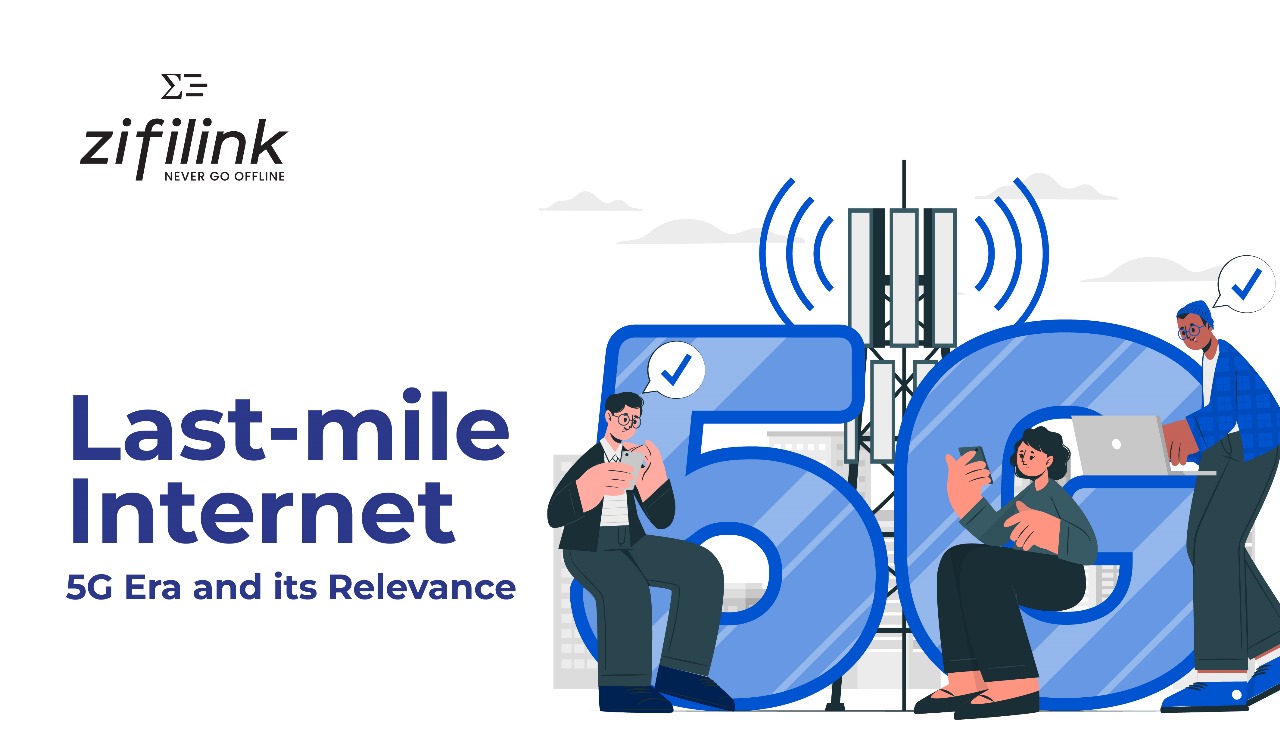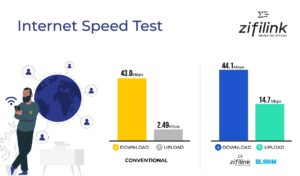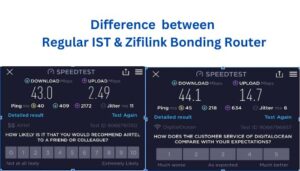
Generations have evolved with time, and so has technology. We are living a life that our ancestors could never have imagined in their lives. We have always been trying to establish strong and quick connectivity. Now, we are in the era of 5G, and we all have greatly relied on the internet. The 5th generation of the internet has come, and we are experiencing significant changes with respect to connectivity. 5G has made a quantum leap in terms of speed and capacity.
Despite the innovation, we have been facing issues with internet access in rural areas when compared to urban areas, which can also be termed as “Last-mile Internet”. People in rural areas need access to the internet. Solving this issue has always been a challenge due to various factors. Now let’s look into a few factors in the following blog:
The Era of 5G and Last-Mile Connectivity
Rural areas in developing countries face many challenges when it comes to internet connectivity and reliability, in spite of living in an era of 5G. We may blame the poor communication infrastructure on the low-income and scattered population, which means that because of the low density of the population there, there’s a lack of a customer base.
The place where you live and how things are built there affect how easy it is to get the internet in rural areas. The last part of the internet network that connects to your home is called “last-mile connectivity.” In rural areas, this can be extra tricky because these places are far away and don’t have many people living there. Hence, network operators keep rural as their least preference.
We must understand that even though it’s hard to get the internet to rural areas, it’s really important to make it possible. Why? Because it can help people in those areas get better education, healthcare, and jobs. So, even though it’s tough, it’s worth doing. Now let’s first understand some issues related to connectivity:
Connectivity Issues in Rural India
1. Infrastructure Cramps:
- Converting 4G towers to 5G is a highly resource-intensive and time-consuming process. It involves substantial infrastructure upgrades and investments, including the installation of new equipment. The significant spectrum difference between 4G and 5G further complicates this transition.
- In areas where 5G is available, users will have coverage as long as they are within a specific range. However, if congestion or other coverage issues occur, the network will switch back to 4G, potentially resulting in inconsistent service quality.
- As of March 2023, only 10% of India’s 650,000 villages have access to fiber-optic connectivity, according to the World Bank.
- The remaining 90% of villages rely on wireless technologies, such as 4G and satellite, which are more expensive and less reliable
2. Geographical Constraints:
India’s diverse topography, including mountains, valleys, and forests, poses challenges for establishing a reliable Internet infrastructure. These geographical features can obstruct the seamless transmission of signals, particularly in remote rural areas.
3. Pricey Deployment:
- The transition from 4G to 5G infrastructure will cost a substantial amount of money. To achieve a smooth transition, telecom businesses must invest in cutting-edge technology, hardware, and knowledge.
- To achieve the best coverage, telecom companies need to build more towers, especially in remote and rural areas. The tower’s installation and related maintenance expenses increase the overall cost.
4. Regulatory Impediments:
Government regulations in India set limitations on the frequency and bandwidth allocation for cell towers. These restrictions can impact the quality and reach of Internet services. Telecom companies must work within these constraints, which can be more stringent in rural areas.
In India, the prescribed reference level at 1800 MHz is 0.92 Watt/ m2, and at 900 MHz, it is 0.45 Watt/m2. These limitations also hinder internet connectivity.
Stats from Various Sources
- According to a 2022 report by the Internet and Mobile Association of India (IAMAI), only 43% of rural Indians have access to the internet.
- The same report found that the average internet speed in rural India is 10.9 Mbps, which is significantly slower than the average speed in urban India (23.5 Mbps).
- A 2021 study by the World Bank found that the cost of internet access in India is among the highest in the world. The average Indian household pays 3.6% of its monthly income for internet access.
How does Zifilink solve last-mile connectivity issues?
Zifilink is like a magic wand for bringing fast internet to rural areas. Incorporating Zifilink routers in rural schools, libraries, and functional areas contributes a lot to last-mile connectivity and helps in the development of rural areas. It works by making data transfer quickly, reducing waiting time, and making the network perform better. Here’s how it solves the last-mile internet challenge:
It is a dongle-based router that aggregates two or more simple connections to form a stronger one. It actually incorporates Benlycos’ advanced bonding and load balancing router technologies.
So what are these technologies?
- B-ABT(Benlycos’ Advanced Bonding Technology) is like combining different connections to create a superfast connection for your internet. It takes the power of DSL, cable, fiber, or wireless connections and merges them together. This means you can say bye-bye to slow downloads, uploads, and videos that pause. B-ABT makes your internet super fast!
- On the other hand, B-LBT(Benlycos’ Load Balancing Technology) makes sure your internet connections are used in the best way possible. It distributes the internet traffic evenly across all the connections, so your online activities like browsing, watching videos, and playing games stay fast and smooth, even when lots of people are using the internet at the same time.
How do Zifilink’s bonding routers serve?
- Improved Reliability: Bonding routers address the challenge of maintaining a reliable connection, especially in areas with inconsistent 5G coverage. They seamlessly combine multiple connections, including 5G, into one unified source. If one connection faces disruptions, the bonding router effortlessly switches to another, minimizing downtime and frustration.
- Enhanced Speed and Low Latency: By aggregating high-speed 5G connections, bonding routers supercharge your internet speed. This is a game-changer for businesses and individuals relying on real-time data transfer, online gaming, video conferencing, and other bandwidth-intensive applications.
- Increased Bandwidth: Bonding routers make the most of 5G’s potential to support numerous devices and data. They achieve this by using multiple 5G connections simultaneously, unlocking a massive amount of bandwidth. This is a lifesaver for businesses that need a robust and scalable network to run their operations.
- Network Resilience: In an era where network resilience is crucial, bonding routers provide a safety net. They not only combine multiple connections but also offer redundancy. If one network experiences an outage or congestion, the bonding router intelligently switches to another, ensuring uninterrupted connectivity—a must for critical applications like healthcare, autonomous vehicles, and industrial automation.
- Remote and Rural Connectivity: Despite the rapid expansion of 5G networks, remote and rural areas still struggle with limited coverage. Bonding routers bridge this digital divide by tapping into a diverse range of connections, including 5G, satellite, and traditional broadband. This extends internet access to underserved regions, promoting digital inclusion.
Read More: How Does Internet Bonding Work ?
Our Practical Experiment
Once, in the bustling city of Chennai, we at ZifiLink, powered by Benlycos, embarked on an exciting demonstration of our most recent innovation, the Bloom Tulip, in a place with excellent 5G coverage provided by Airtel. We were eager to see how our product would perform in the world of rapidly expanding 5G networks.

We calculated the speed of the connection based on the parameters of upload and download speed. We were surprised to know that the 5G speed connection gives an upload capacity of 2.49 Mbps, whereas our bloom tulip gave it exceptionally well to 14.7 Mbps, which proved the promise of the product.
For a reference, refer to the images below

Conclusion
In summary, the arrival of super-fast 5G internet is changing how we connect online. But in rural places like parts of India, getting good internet is still a big problem.
Zifilink is a rescue for rural areas with proven reliability and productivity. The technologies of B-ABT and B-LBT are saviors for making your internet connection better. These technologies combine different internet sources, making sure everything runs smoothly and protecting you in case of network glitches. These features provide a fantastic internet experience for both businesses and regular users all around the world. By using B-ABT from Benlycos, you can be at the forefront of technology, get more work done, and be ready for the future of internet connections.
In the 5G era, it’s important to connect everyone, including rural areas, to fast internet. This can help rural places grow and make life better for the people living there.



About The Author: Deepak
More posts by Deepak